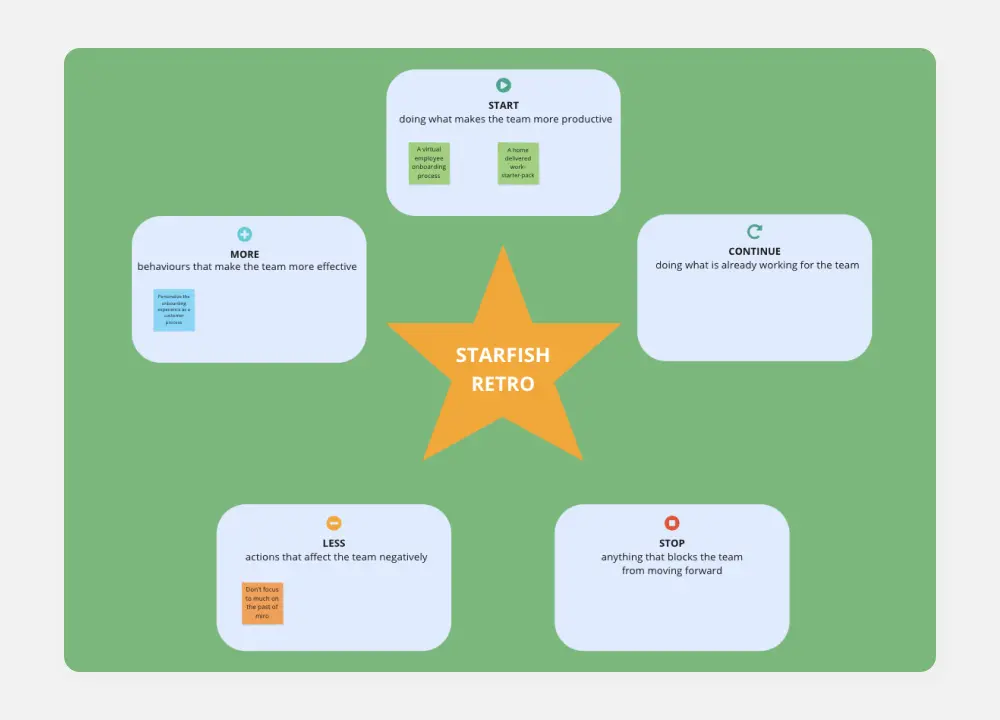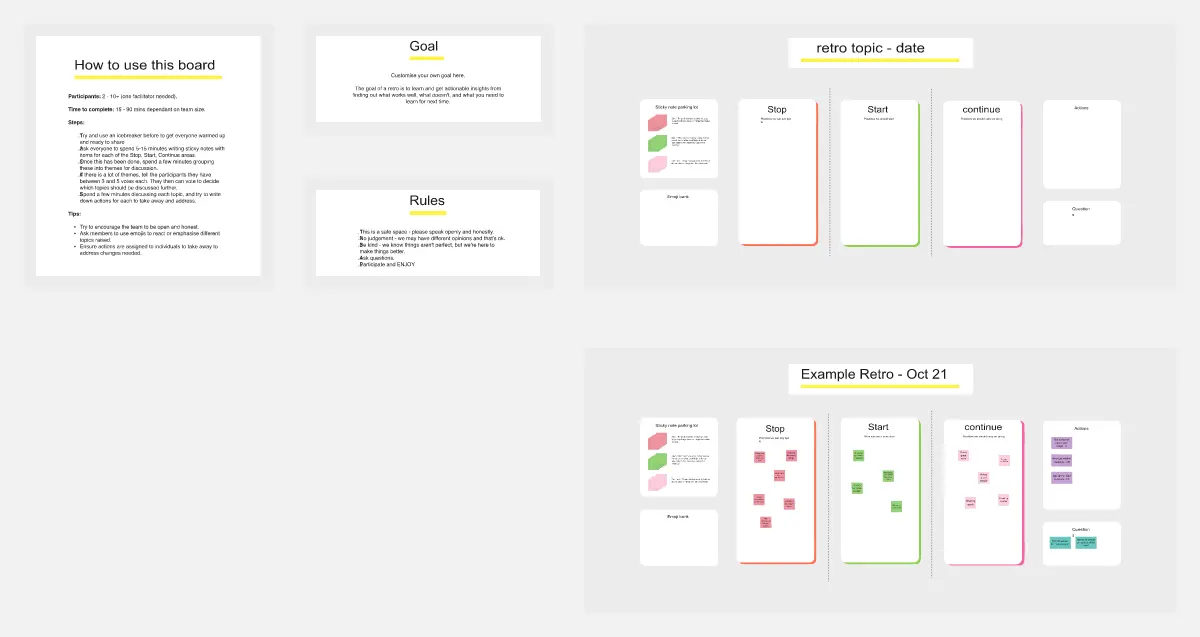All templates
5Gs Retrospective

Dave Westgarth
Digital Delivery Manager @ BJSS
Dave Westgarth is currently working as Head of Delivery @ UnifEye. He serves on software development, automation, cloud and AI/ ML projects across the spectrum of delivery approaches.
Categories
Similar templates
The 4-Step Retrospective
270 likes
3.8K uses

Starfish Retrospective
277 likes
6K uses

Start, Stop, Continue Retrospective
269 likes
3.8K uses

The 4-Step Retrospective
270 likes
3.8K uses

Starfish Retrospective
277 likes
6K uses

Start, Stop, Continue Retrospective
269 likes
3.8K uses
